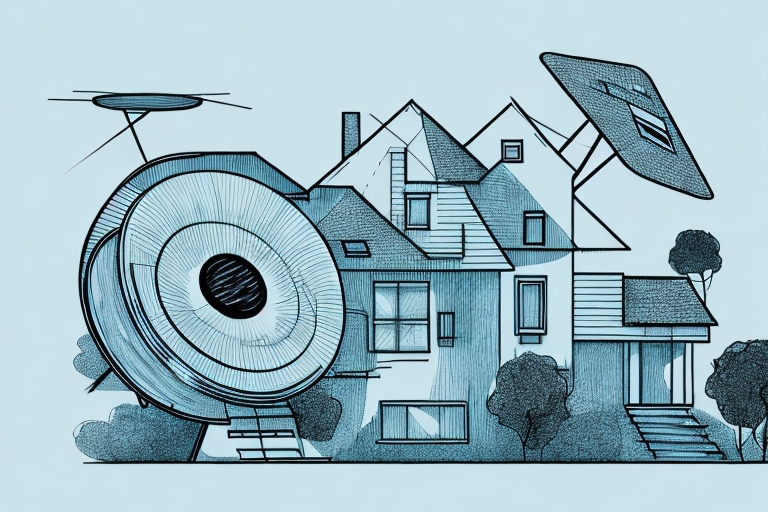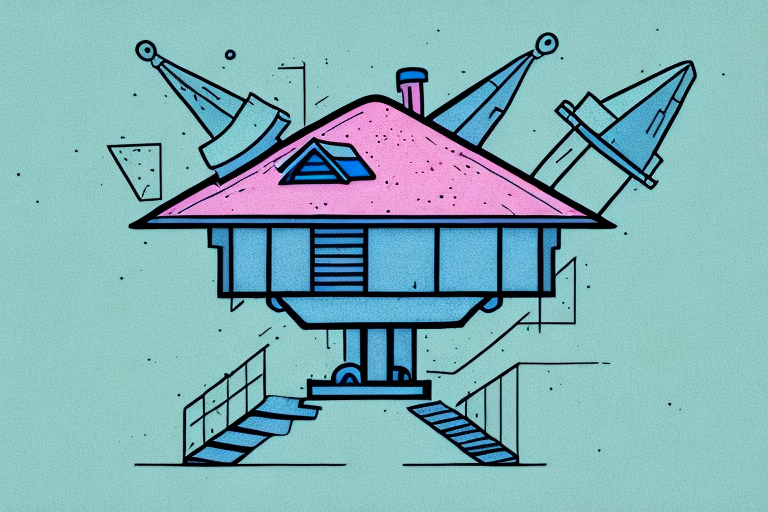Gone are the days when having a TV aerial was a necessity to watch television. With modern technological advancements, there are several alternative ways to watch television without relying on traditional TV aerials. In this article, KTV Services explore these alternative methods to help you choose the best option for your needs. But, if you’d still like aerial installation in Kent, then feel free to contact us for a free quote.
Understanding the Basics of TV Aerials
Before diving into the alternative methods, let’s briefly discuss the basics of TV aerials. A TV aerial is a device that is used to receive broadcast television signals. It is commonly known as a TV antenna and is an essential component of any television setup.
What is a TV Aerial?
A television aerial, commonly known as a TV antenna, is a device that receives broadcast television signals sent by television stations and transmits them to a television set. It is a long, metal rod that is usually mounted on the roof of a house or building. The aerial is designed to capture the radio waves that are transmitted by television stations and convert them into an electrical signal that can be processed by a television set.
How Does a TV Aerial Work?
When a signal is transmitted by a television station, it travels through the airwaves and is captured by the aerial. The aerial then converts the signal into an electrical current that is sent to the television, where it is translated into an image and sound. The quality of the image and sound that you receive will depend on the strength of the signal that is captured by the aerial. If the signal is weak, you may experience a poor-quality image or no reception at all.
There are a few factors that can affect the strength of the signal that your aerial receives. For example, if you live in a remote area, the signal may be weak due to the distance between your location and the television station. Similarly, if there are obstacles such as buildings or mountains blocking the signal, you may experience similar issues.
Limitations of TV Aerials
Although TV aerials have been a reliable method of watching television for decades, they do have their limitations. For instance, if you live in a remote area, the signal may be weak, resulting in a poor-quality image or no reception at all. Similarly, if there are obstacles such as buildings or mountains blocking the signal, you may experience similar issues. However, there are ways to overcome these limitations.
If you live in a remote area, you may need to install a larger aerial or a signal booster to improve the strength of the signal. Similarly, if there are obstacles blocking the signal, you may need to install your aerial in a higher location or use a different type of aerial that is designed to capture signals from a different direction.
Overall, TV aerials are a great way to receive broadcast television signals. They are easy to install and provide a reliable way to watch your favourite shows. However, it is important to be aware of their limitations and to take steps to overcome them if necessary.
Alternative Methods to Watch TV
Are you tired of the limited channels and poor signal quality of traditional TV aerials? Fortunately, several alternative methods to watch television exist that don’t rely on them. These methods range from streaming services to satellite television, offering a vast selection of shows and movies with reliable signal quality. Let’s explore these options in more detail.
Streaming Services
Streaming services are convenient, affordable, and offer a vast selection of television shows and movies. They require an internet connection, and you can watch them on a variety of devices such as smartphones, tablets, laptops, and modern TVs. With streaming services, you can watch your favourite shows and movies whenever and wherever you want, without being tied to a schedule or location.
Popular Streaming Platforms
Netflix, Hulu, Amazon Prime Video, and Disney+ are some of the most popular streaming platforms available. These platforms offer a variety of subscription plans with different prices and features. Netflix, for instance, offers plans ranging from Basic to Premium, with prices from £6 per month. On the other hand, Disney+ offers a single plan at £5 per month. With such a wide range of options, you can choose the plan that best suits your needs and budget.
Device Compatibility
Most streaming platforms are compatible with several devices. However, it’s crucial to check if the streaming service supports your device before subscribing to avoid any disappointment. You can watch your favourite shows and movies on your smartphone, tablet, laptop, or modern TV, making it easy to enjoy your entertainment on the go or from the comfort of your own home.
Subscription Plans and Costs
Each streaming platform offers different subscription plans, with varying levels of features and content. For instance, Netflix offers plans ranging from Basic to Premium, with prices from £6 per month. On the other hand, Disney+ offers a single plan at £5 per month. With such a wide range of options, you can choose the plan that best suits your needs and budget.
Pros and Cons of Streaming Services
One of the main advantages of streaming services is the convenience they offer, allowing you to watch your favourite shows and movies whenever and wherever you want. Additionally, they are relatively affordable compared to traditional cable and satellite television. However, some streaming services require a stable internet connection, and if you have a low internet speed, you may experience buffering issues. Consider your internet speed and availability before subscribing to a streaming service.
Satellite TV
Satellite TV involves using a satellite dish to receive television signals, which can provide a more stable and reliable signal compared to traditional TV aerials. With satellite TV, you can enjoy a wider range of channels and features, such as sports packages and pay-per-view events.
How Satellite TV Works
A satellite dish picks up signals sent from television stations from a satellite in space. The signal is then transmitted to your television via a receiver connected to the satellite dish. This process ensures a more reliable signal quality compared to traditional TV aerials.
Satellite TV Providers
The popular satellite TV providers include Sky TV. Each provider offers various packages with different channel lineups and prices. With satellite TV, you can choose the package that best suits your needs and budget, with a wider range of channels and features than traditional broadcast.
Equipment and Installation
Satellite TV requires a satellite dish, a receiver, and an installation process. Generally, the provider will send an expert technician to install the equipment and set up the service. While there is an upfront investment in equipment, the reliable signal quality and wider range of channels and features make satellite TV a worthwhile investment for many households.
Pros and Cons of Satellite TV
The major advantage of satellite TV is the signal quality, which is generally more reliable than TV aerials. Satellite TV also offers more channel options and features than traditional broadcast, such as sports packages and pay-per-view events. However, satellite TV requires an upfront investment in equipment, and you need a clear line of sight to the satellite, which can be difficult in areas with tall buildings or trees. Consider your location and budget before subscribing to a satellite TV service.
Conclusion
As you can see, several alternative methods to traditional TV aerials exist, such as streaming services and satellite TV. Consider your viewing habits, budget, and location to choose the best option for you. With these alternative methods, you can still enjoy your favourite TV shows and movies without relying on traditional TV aerials.




